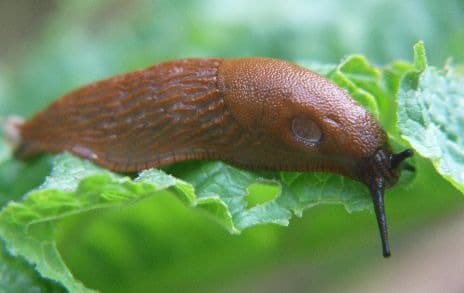This month, we see our winter gardens revived in wistful wonderlands and, to achieve sensational gardens this season, you’ll need to get to grips those spring-time jobs. With beautiful blooms beginning to appear, it’s time to take vital steps towards ensuring a beautiful bloomin’ outcome!
So, pull up your socks and head out into the fresh air to tackle the top gardening tasks for the marvellous month of March.
Wet weather worries
As the temperature begins to rise and the garden begins to blossom, slugs will slither out from their various winter hideaways and fix their hungry eyes on the new shoots in our gardens.
What to look for
While some slug damage has to be accepted, a large infestation of slugs can wreak havoc. Especially on young plants and fresh shoots. Look out for slime trails, irregular holes in plants and potato and bulb damage.

Preparing the garden for a potential gastropod assault can be easy and there are many options to bolster your defences.
Military precision
The timeless military tactic of defence is key and, by employing all of these methods, you will have the greatest chance of saving your plants.
I would always recommend using natural solutions, as these are not harmful or dangerous to other life that live in the garden.
1) Slugs are known to launch night-time raids. And venturing out with a torch and pair of chopsticks to catch them is a great way to reduce the local slug population. Make sure you dispose of the slugs far away from your garden, or they will most likely return!
2) Beer traps are another favourite of mine—slugs are extremely fond of beer and will travel great distances to quench their thirst, but inevitably it will also provide a way kill them off. Find out how to set up your own beer trap here.
Barriers
Physical barriers are also beneficial and using coffee grounds, copper wire and sawdust can have some deterrent effects on slugs.
3) Finally, bring in natural slug predators, like nematodes—microscopic parasites that feed on slugs and can be bought from garden centres or online.

Even birds, toads and hedgehogs can provide the reinforcements you need to combat any menacing slugs.
Shelter
Providing food and shelter for these creatures will encourage them into your garden. See my tips for attracting birds and hedgehogs into your outdoor space, and they’ll work hard as your very own personal garden bouncers to keep out the riff-raff.
Get summer-ready
While it may feel too early in the year to be thinking about summer, March is the perfect time to plant summer flowering bulbs. These will provide beautiful colour and interest over the warmer months ahead when the threat of frosts has passed.

Amazing bulbs to plant this month include Gladiolus such as the hot-pink ‘Charming Beauty’ variety, Dahlias—that explode into vibrant warm colours, and exquisite and delightful lilies.
Lilies
Get your lilies planted as soon as they are purchased or they will quickly dehydrate and perish.
Begonias are another enchanting option that provide long-lasting colour in the summer garden. Ensure the likelihood of frosts has passed before planting these beauties out.
Check out my complete guide to planting summer flowering bulbs for more information on how you can prepare your garden for the coming summer.
Wage war on weeds
Just like slugs, weeds will start to appear in greater numbers as we switch from winter to spring. They tend to spring up in the most annoying of places. Also they can have a negative impact on both the visual appeal and health of your flower beds and borders. It is particularly important to remove them when they are hindering the growth of your plants. Which they do by forcing them to compete for nutrients and water.
Manually removing weeds that have sprung up can be an effective way of ensuring your garden is weed-free.
Dry day
Pick a day when the ground is dry and use a hoe, running it between rows of plants to kill any invasive seedlings and established weeds.
Hoeing brings the seedlings to the top of the soil, where they dry out and die.
Do not throw the weed seedlings into your compost heap, as they may come back to haunt you when applied to the garden.

Alternatively, you can put on a pair of gloves and hand pull any weeds you see sprouting around your plants. Hand weeding should be done with care, so as not to disturb the roots of the surrounding plants and persistent weeds, such as bindweed or couch grass run the risk of re-growing if not removed entirely.
Tip:
Once you have cleared the garden of weeds, think about covering the affected area with an organic-matter mulch.
This will help to smother any that are trying to poke their heads through the soil and will also protect your plant from late frosts.
Bark or woodchips are good examples of mulch you can use here. There are also many weed-supressing fabrics available. When laid they can prevent old weeds from resurfacing and pesky new weeds from becoming established.

wow great art am glad to see that this kind of creativity .
Superb well done
nice post.
and also quality of content is good .
https://redshed.co.uk/